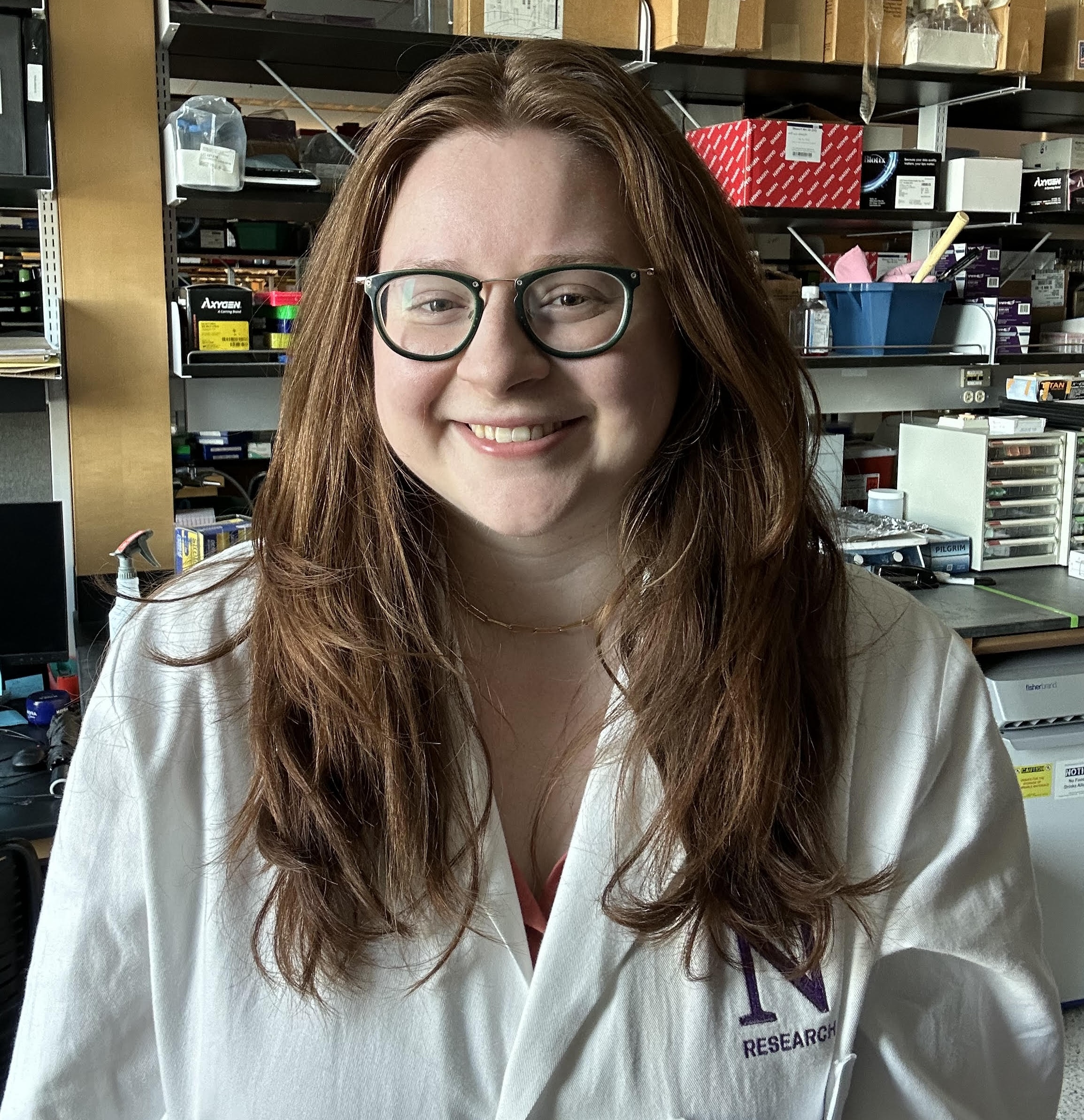CRS Scientist Spotlight on Natalie Piehl
My favorite part of CRS is the breadth of research.
Natalie Piehl
PhD Candidate, Bulun Lab
Natalie Piehl is a 2nd year DGP student in Dr. Serdar Bulun's lab. Her research focuses on how estrogen and progesterone induce muscle fibrosis and atrophy in the lower abdomen, culminating in inguinal hernias.

Thesis mentor: Serdar Bulun, MD
Thesis title: "ESR1/PGR action in lower abdominal muscle fibroblasts induces inguinal hernia formation and fibrosis/atrophy through TGFβ signaling"
What brought you to join the CRS community and what is your current position?
I am a 2nd year DGP student in the Bulun Lab. I ended up in the CRS community because I wanted to understand why certain diseases are more common or severe based on sex. The more I learned about the complexity of sex hormone action the more interested I got and that’s how I ended up reaching out to Dr. Bulun.
Could you describe your research?
I investigate how estrogen and progesterone induce muscle fibrosis and atrophy in the lower abdomen, culminating in inguinal hernias. We’ve demonstrated that estrogen receptor action in fibroblasts are the upstream drivers of this disease phenotype, but the downstream mechanism is unclear. I will be using in vitro and in vivo mouse experiments as well as abdominal muscle tissue from inguinal hernia patients to better understand this mechanism.
What aspect(s) of CRS do you find most valuable?
My favorite part of CRS is the breadth of research. Given we are focused more on a system within the body than a given approach or lens, a lot of different kinds of research gets showcased regularly. I think this is a wonderful way to broaden how you think as a scientist and get exposed to new ideas or techniques.
What has been the most valuable aspect to your training as a reproductive scientist?
The most valuable aspect of my training has been the opportunities to work so closely with human health. Though a lot of my research revolves around mouse and cell culture models, I also have access to human tissues through several different studies and collaborations. Being able to translate findings back and forth between human and non-human models is really exciting.
What is one piece of advice you would give to young scientists starting in their journey in science?
Don’t pigeonhole yourself too early, I still find myself leaning on skills or knowledge I gained in completely different fields in my current work.
What do you think will be the next big contribution in the reproductive biology field?
Non-hormonal contraception!
What hobbies do you have outside of the lab?
I read a lot of books and watch a lot of movies in the horror and sci-fi realm. I also love playing Civilization VI, Baldur’s Gate 3, and Elden Ring. Outside the house I’m usually eating my way through Chicago or exploring a neighborhood.